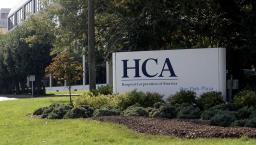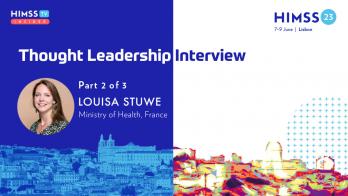How heightening patient engagement can reap financial rewards

Florian Otto, CEO and cofounder of Cedar
Photo: Florian Otto
Patient engagement is a hot topic among healthcare provider organization executives. Especially as people have begun approaching providers more as consumers than patients, it is critical that providers be able to engage with their patients as effectively as possible.
Florian Otto is CEO and cofounder of Cedar, vendor of a financial engagement platform. He has a lot of experience connecting provider organizations and patients.
We interviewed Otto to glean his expertise in patient engagement technology trends, being mindful of healthcare workers when innovating the patient experience, a consumer-first mentality when creating meaningful technology and patient touchpoints that can reap financial wins, and more.
Q. Overall, what are some of the important patient engagement technology trends you see today?
A. The healthcare industry has evolved significantly in recent years, between progress in innovation and wider market influences. And with the added financial pressures that the healthcare system and patients are facing, one of the most important trends that I am seeing is the rise of systems of engagement.
All industries have systems of record, and these technologies have been the foundation for digital transformation within their industries. Think Sabre for travel or SAP for enterprise. However, these technologies are typically very complex, with implementation and updates being a major undertaking.
Systems of record also try to do everything for the end user, but at some point, consumer demands exceed their capabilities. That’s where systems of engagement, lighter-weight, cloud-based apps that sit between the system of record and the user (or consumer), come into play. It’s already happened for industries like travel (Expedia and Kayak) and enterprise (Workday and Slack), and now it must happen in healthcare.
In healthcare, systems of record like EHRs can help providers standardize data intake and automate aspects of the patient journey. But a “one-size-fits-all” approach quickly becomes a “one-size-fits-none” approach when it comes to truly engaging with patients. Our research tells us that the majority of patients want to customize their experience with their provider as to how they pay their bills or communicate.
We must move toward a consumer-centric approach to healthcare, where the entire ecosystem works together and truly engages with patients.
Q. You suggest efforts to innovate the patient experience must be mindful of the healthcare workforce. Why? Are there problems here?
A. Health systems have two sets of stakeholders: patients and providers. Any efforts to innovate the consumer experience must be mindful of the healthcare workforce and their needs, particularly given widespread burnout and continued workforce shortages stemming from the pandemic.
New technology can exacerbate existing burnout as providers try to get up to speed amidst their already busy schedules. But if a new technology is solving a core problem for patients, then it will ultimately make the lives of providers and staff much easier.
For example, it can be very time-consuming to answer patient questions on the phone or have manual intake forms done in the waiting room. Any ineffective utilization of staff resources has a high opportunity cost and hinders high-impact tasks and processes, such as supporting high-need patients.
Patient engagement technology can free up staff for these high-value tasks and improve employee engagement by enabling staff to find greater satisfaction and meaning in their work.
That’s why making an implementation seamless for all parties should be the biggest priority. By laying out client and vendor expectations for the implementation up front, vendors and providers can work together to ensure both parties are meeting their project goals and objectives to best serve the client and their patient population.
Knowing these expectations up front also allows us to map back out workflows to the client’s needs and deadlines.
Ultimately, innovating on the patient experience should result in great patient engagement – translating into improved outcomes for patients, providers and payers.
Q. In your view, meaningful technology and patient touchpoints can help providers increase payment rates and revenue. You say it has to do with a consumer-first mentality. Please elaborate, especially as it relates to patient engagement and patient experience.
A. No one in healthcare wants things to be complex, surprising or confusing, which is often the case when it comes to the financial experience. When providers prioritize the financial experience, patients benefit from a billing experience that is simple, modern and compassionate.
For example, in our user research we hear from patients that they want to pay their bills, but they sometimes need additional time or flexibility to do so.
Meaningful technology and patient touchpoints can help providers increase patient satisfaction and payment rates. As I mentioned, 2022 was a difficult year for providers financially, with overall hospital margins down at the end of the year.
This year is looking slightly better, but providers will have to learn to do more with less and keep their patient populations coming back; 93% of consumers say the quality of the financial experience is an important factor in their decision to return to a healthcare provider.
Technology should be leveraged to better understand your consumer through consistent experimentation and optimization of digital tools to learn what they value in their experience and utilize these learnings to meet their needs.
For example, you might think that sending more texts will result in more payments. The more you nudge, the more likely you’ll get a response, right? Not so. Our data actually shows 3% higher bill resolution by reducing the number of text messages. As it turns out, the optimal frequency for most patients to hear from their health system is: one single text, one email every 10 days and mailers every 30 days.
Q. Why do you say healthcare provider organizations should modernize revenue cycle management? And what in your mind are keys to modernization?
A. The average consumer is becoming more aware of the power they hold in their purchasing decisions and which vendors they choose to engage with. Consumers have developed higher expectations for personalization and customer experiences. This is now translating to the healthcare industry and, given that healthcare billing is such a pain point for patients, it’s vital to have the payment process evolve in tandem with innovation in healthcare delivery and patient experience initiatives.
The healthcare billing and payment process is an aspect of healthcare that hasn’t evolved as quickly as the advancements in medicine and technology. Many aspects of the billing process have not changed in over a hundred years. This is therefore an area very ripe for innovation – and the key is payer-provider collaboration.
Healthcare consumers experience a lot of friction along their healthcare journeys. Not only do U.S. consumers spend 12 million hours a week on the phone with health insurers, more than one-third of consumers have been sent to debt collections because of a billing issue between their healthcare provider and health insurer.
When each party plays a separate role, neither can fix the experience alone; more than 90% of payers and providers believe that collaboration is a key determinant of success. In bringing both sides together, we can create the best possible experience, reducing billing friction for consumers while delivering more efficient operations for payers and providers.
For example, by combining payer data together with provider communications, consumers will enjoy increased clarity and accessibility to their financial responsibility in the form of one unified bill, removing the frustration of disparate sources of information and support.
Follow Bill's HIT coverage on LinkedIn: Bill Siwicki
Email him: bsiwicki@himss.org
Healthcare IT News is a HIMSS Media publication.






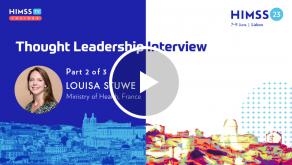
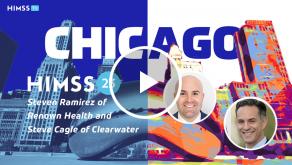
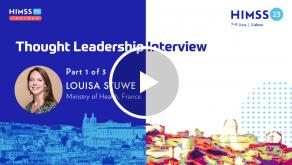
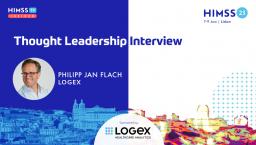

3a81.jpg)


